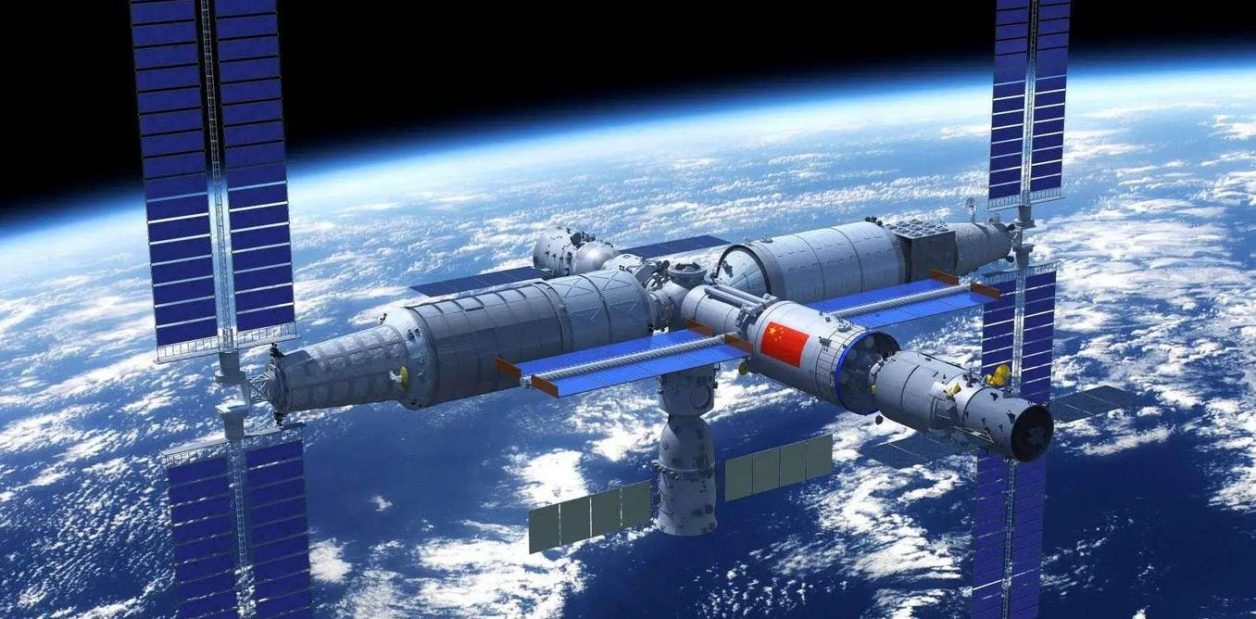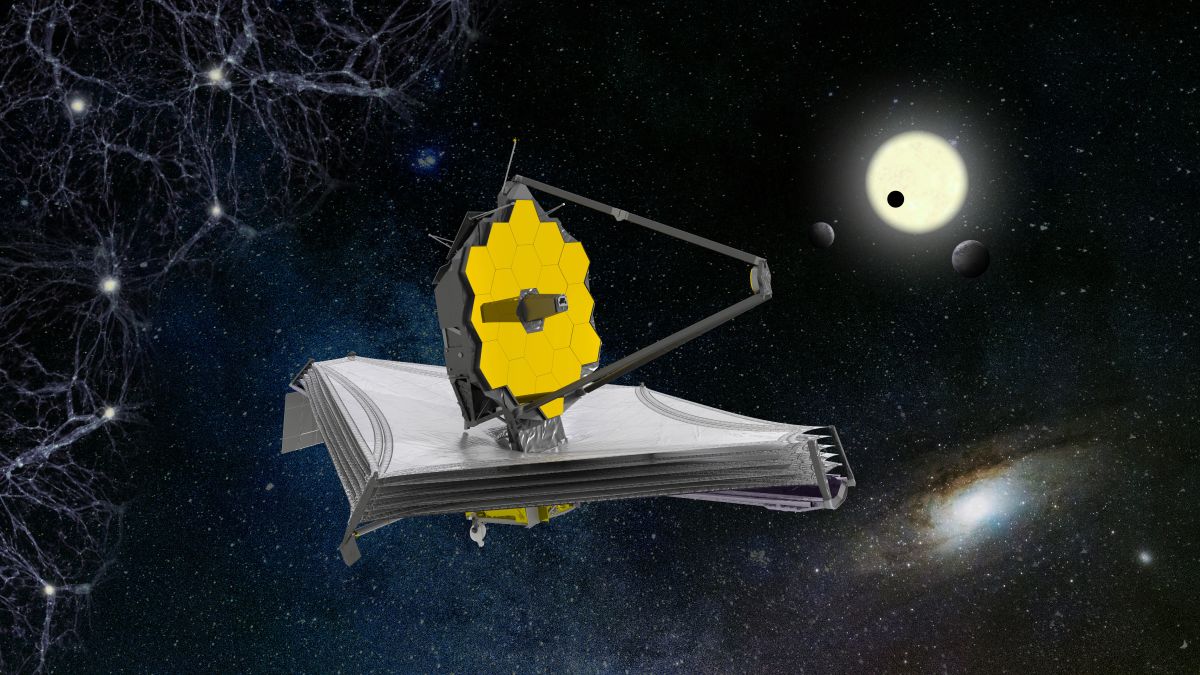China is stepping up its efforts to explore the universe as it prepares to launch its “Xuntian” space telescope next year. Known as China’s “Hubble”, authorities in Beijing say it surpasses the capabilities of the NASA and European Space Agency (ESA) telescope.
The flagship telescope is set to reveal new information about distant galaxies, mysterious dark matter, dark energy and the past and future evolution of the universe, Chinese news agency Xinhua reported.
A space telescope, also called a space observatory, is a telescope used to observe celestial objects from space.
The Chinese Survey Space Telescope (CSST) or the Xuntian Space Telescope is a space-based optical observatory that will allow astronomers to survey the sky and capture a general map or photographs of the sky.
The Xuntian will photograph 40 percent of the sky and transmit vast data to Earth for review by scientists around the world, according to Li Ran, a CSST Scientific Data Reduction System project scientist. Its main objective is to solve the most fundamental problems of the universe.
Chinese researchers said the telescope will measure the positions, shapes and brightness of nearly a billion galaxies, which could help explain their evolution.
It will also help determine the upper limit of neutrino mass and shed light on the enigmatic dark matter and dark energy that make up the vast majority of the mass-energy content of the universe.
The Xuntian Telescope will be connected to the Tiangong Space Station, which will become operational later this year. It was originally intended to be placed on Tiangong, but there were concerns about vibration, contamination, stray light and obstruction of the space station’s line of sight.
Later a radical design was adopted and it was decided that the telescope would be placed in the same orbit as the space station but away during normal operations and docked with the space station only when necessary.

“The telescope can bring Chinese optical astronomy research to the forefront and help nurture world-class Chinese scientists. It can also take breathtaking photos, allowing the audience to directly understand the universe,” Li added.
Yet to be launched, this telescope is widely compared to the Hubble, which was jointly developed by NASA and ESA. The Hubble was the very first “sophisticated” space telescope, leading to many important discoveries and observations.
The CSST will enable China to undertake advanced space exploration activities, which are imperative to achieving its goal of global space dominance.
Is Xuntian a challenger for Hubble?
The Xuntian is a bus-sized facility with the height of a three-story building. In an exclusive interview with Xinhua, Liu Jifeng, deputy director of the National Astronomical Observatories of China (NAOC), said that if the telescope’s aperture is two meters, it has a field of view 350 times larger than that of Hubble. .
According to Chinese researchers, the CSST has a three-mirror anastigmat design (no optical aberrations) that allows it to achieve exceptional image quality in a wide field of view. It is an unobstructed off-axis Cook telescope that, when properly sampled, can achieve greater accuracy in photometry, location, and shape measurements.
Five types of equipment, including a survey camera, will be mounted on the CSST. According to the researchers, the main focal plane of the camera is equipped with thirty 81-megapixel detectors that will capture images and spectra of approximately 17,500 square degrees of mid-to-high galactic and mid-to-high ecliptic latitude skies in different bands.

On the other hand, the Hubble Space Telescope (HST) has a 2.4-meter (94-inch) primary mirror, a smaller secondary mirror, and several recording devices capable of detecting visible, ultraviolet, and infrared light.
The most important of its equipment, the wide-field planetary camera, makes it possible to acquire wide-field or high-resolution photographs of planets and galactic and extragalactic objects.
The discoveries made by the HST are believed to have transformed astronomy. The first accurate measurement of Hubble’s constant, which is the rate of expansion of the universe, came from his observations of Cepheid variables in nearby galaxies.
The HST has also photographed young stars with discs that will one day become planetary systems.
An image of around 1,500 galaxies called the Hubble Deep Field reveals galactic evolution through almost the entire history of the cosmos. The HST was also used to discover Hydra and Nix, two moons of the dwarf planet Pluto, making it an exceptional space telescope within the solar system.
Prototype of the Xuntian Space Telescope (photo taken in 2021). The telescope should be launched in 2023 and fly with the Chinese space station in the same orbit#CSST #Tiangong pic.twitter.com/PwqW2waEwW
— Spaceflight in China 🙏 (@CNSpaceflight) April 2, 2022
However, CSST Optical Facility project scientist Zhan Hu says CSST will most likely be the largest space telescope for astronomy in the near-ultraviolet visible category in the decade before 2035. CSST can dock at the station as needed for refueling and maintenance, making it cheaper to maintain than Hubble.
From 1993 to 2009, NASA conducted five Space Shuttle servicing missions to perform repairs, replace parts, and install new equipment for Hubble.
Additionally, the CSST is expected to begin science operations in 2024 and has a 10-year mission life that could be extended in theory.

That said, while it is true that the HST has reached a ripe old age, it also has a successor who is poised to carry forward the distinguished legacy established by the HST. Hubble will eventually be replaced by the James Webb Telescope, launched in 2021.
Intrigued by Chinese researchers’ claims about CSST or Xuntian, EurAsian Times spoke to a space expert to find out if it holds up. Girish Linganna, space and defense analyst, told the EurAsian Times: “When it comes to reflecting telescopes, the key element is the size of its curved mirror.
You could kind of think of a telescope mirror as a bucket of light, the more light you can collect in that bucket, the fainter and farther things you can see in the universe. Hubble’s mirror had an impressive diameter of 7.8 feet (2.37 meters).
The Hubble Space Telescope lives on borrowed time. The iconic satellite was only supposed to operate for 15 years and has now been running for over 30 years. For the past three decades, Hubble has been the largest and most powerful space telescope ever built.
Xuntian’s main mirror will be about two meters (six and a half feet) across, roughly the size of the mirror at the heart of the Hubble Space Telescope. Slightly smaller than Hubble, Xuntian won’t quite match the resolution of its predecessor, as many agencies claim.
These observations would not convince China because it believes that Xuntian will surpass Hubble in terms of exploration. Not only that, it aims to take on the missions undertaken by Hubble. For example, China wants to observe and record the movement of Uranus, of which Hubble has made several observations.
For China, which aspires to challenge the hegemony of the American space program, a space telescope of this caliber could be of great importance even if it does not surpass the capabilities of the Hubble or the James Webb.
That said, more will be known about the Xuntian once it launches and its mission begins.
 Universo Viviente
Universo Viviente



